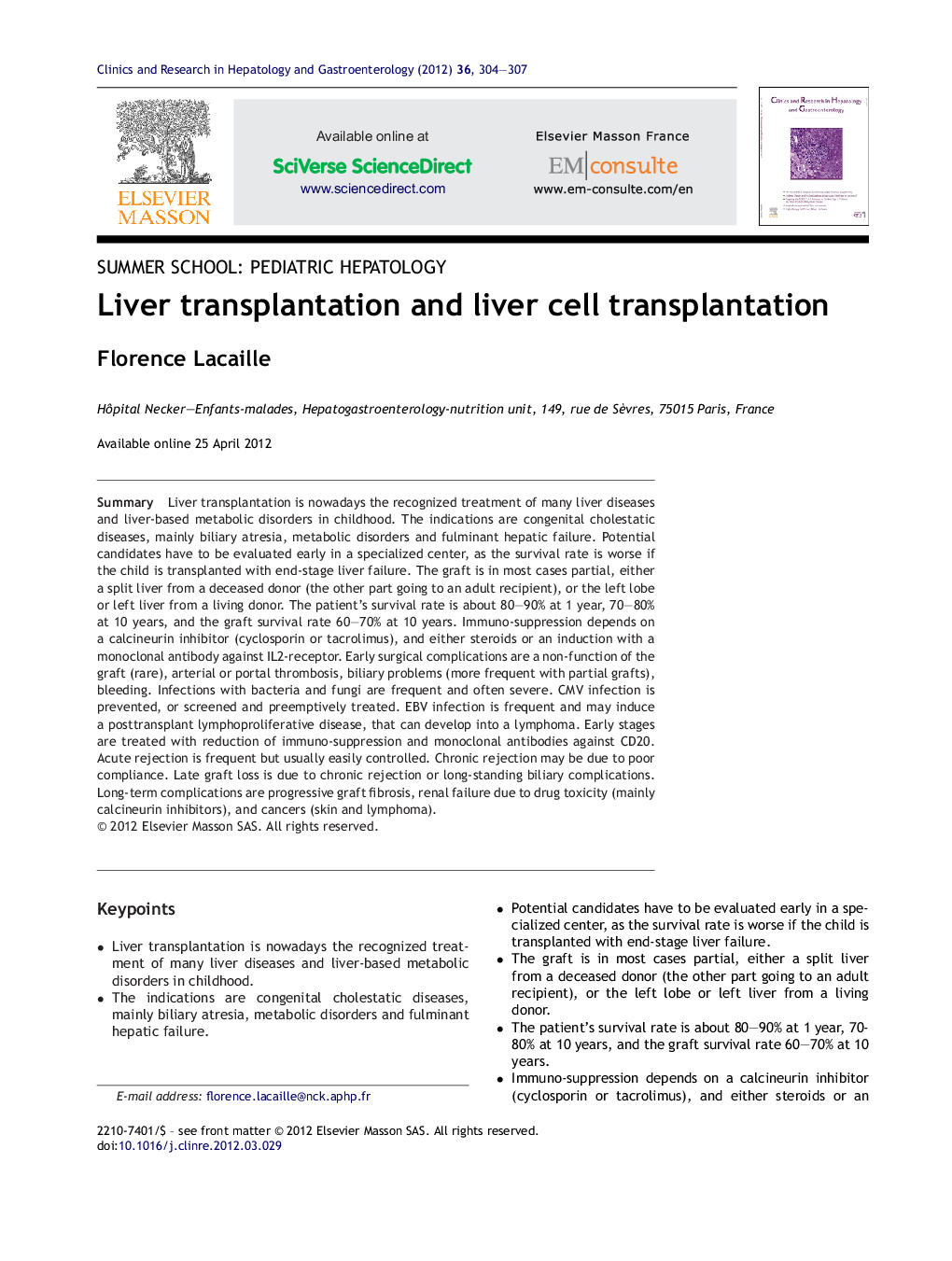| Article ID | Journal | Published Year | Pages | File Type |
|---|---|---|---|---|
| 3286893 | Clinics and Research in Hepatology and Gastroenterology | 2012 | 4 Pages |
Abstract
Liver transplantation is nowadays the recognized treatment of many liver diseases and liver-based metabolic disorders in childhood. The indications are congenital cholestatic diseases, mainly biliary atresia, metabolic disorders and fulminant hepatic failure. Potential candidates have to be evaluated early in a specialized center, as the survival rate is worse if the child is transplanted with end-stage liver failure. The graft is in most cases partial, either a split liver from a deceased donor (the other part going to an adult recipient), or the left lobe or left liver from a living donor. The patient's survival rate is about 80-90% at 1 year, 70-80% at 10 years, and the graft survival rate 60-70% at 10 years. Immuno-suppression depends on a calcineurin inhibitor (cyclosporin or tacrolimus), and either steroids or an induction with a monoclonal antibody against IL2-receptor. Early surgical complications are a non-function of the graft (rare), arterial or portal thrombosis, biliary problems (more frequent with partial grafts), bleeding. Infections with bacteria and fungi are frequent and often severe. CMV infection is prevented, or screened and preemptively treated. EBV infection is frequent and may induce a posttransplant lymphoproliferative disease, that can develop into a lymphoma. Early stages are treated with reduction of immuno-suppression and monoclonal antibodies against CD20. Acute rejection is frequent but usually easily controlled. Chronic rejection may be due to poor compliance. Late graft loss is due to chronic rejection or long-standing biliary complications. Long-term complications are progressive graft fibrosis, renal failure due to drug toxicity (mainly calcineurin inhibitors), and cancers (skin and lymphoma).
Related Topics
Health Sciences
Medicine and Dentistry
Gastroenterology
Authors
Florence Lacaille,
